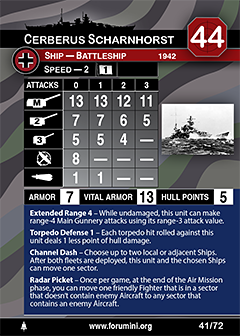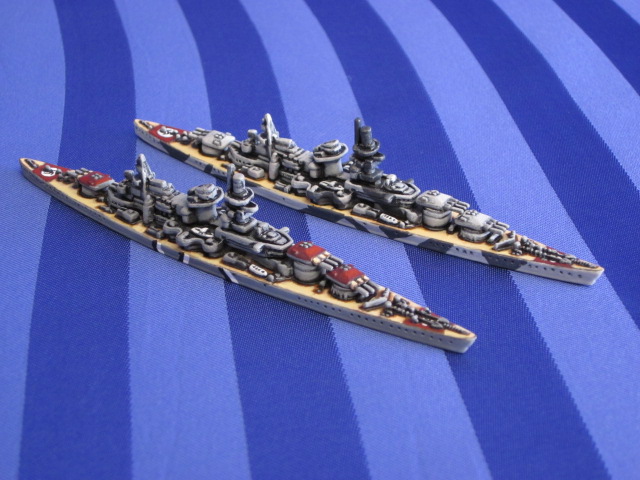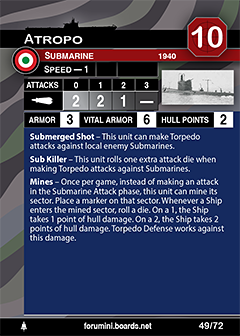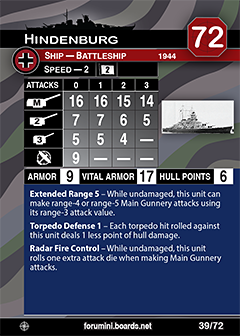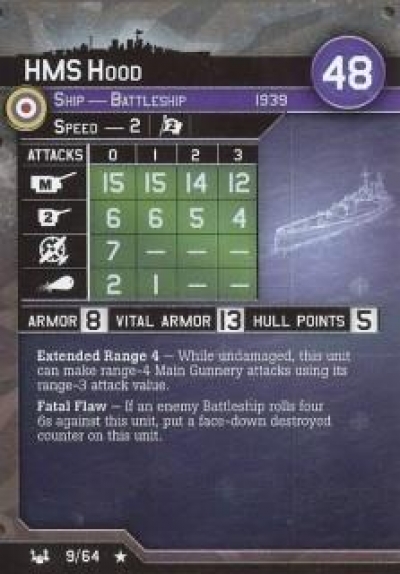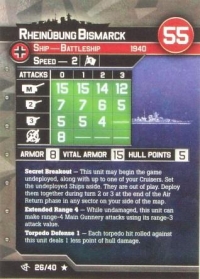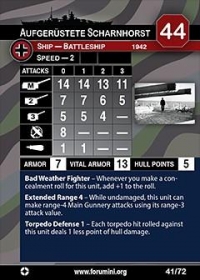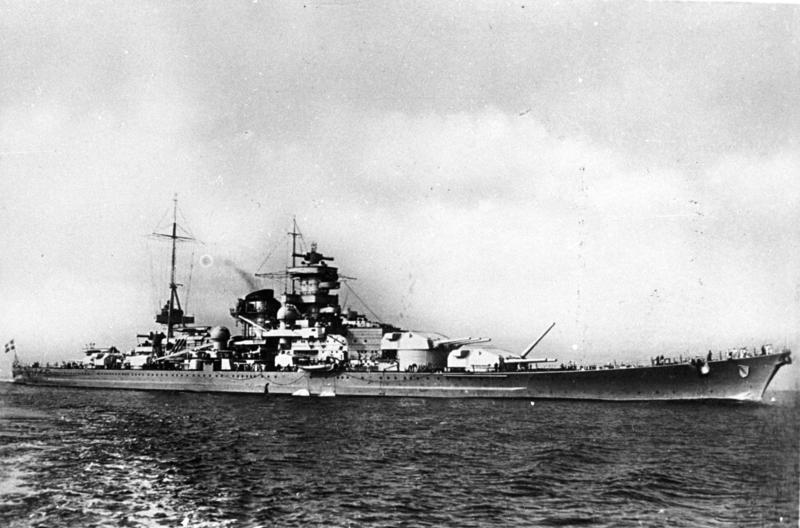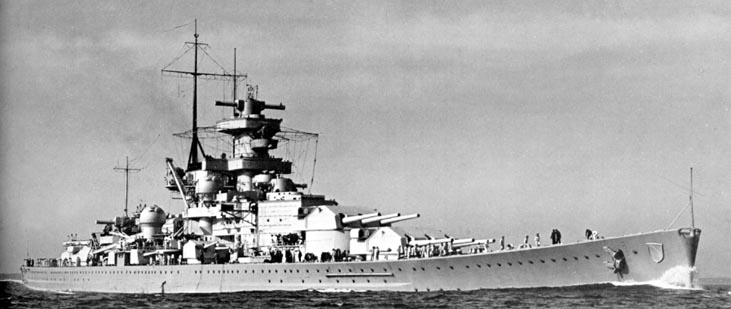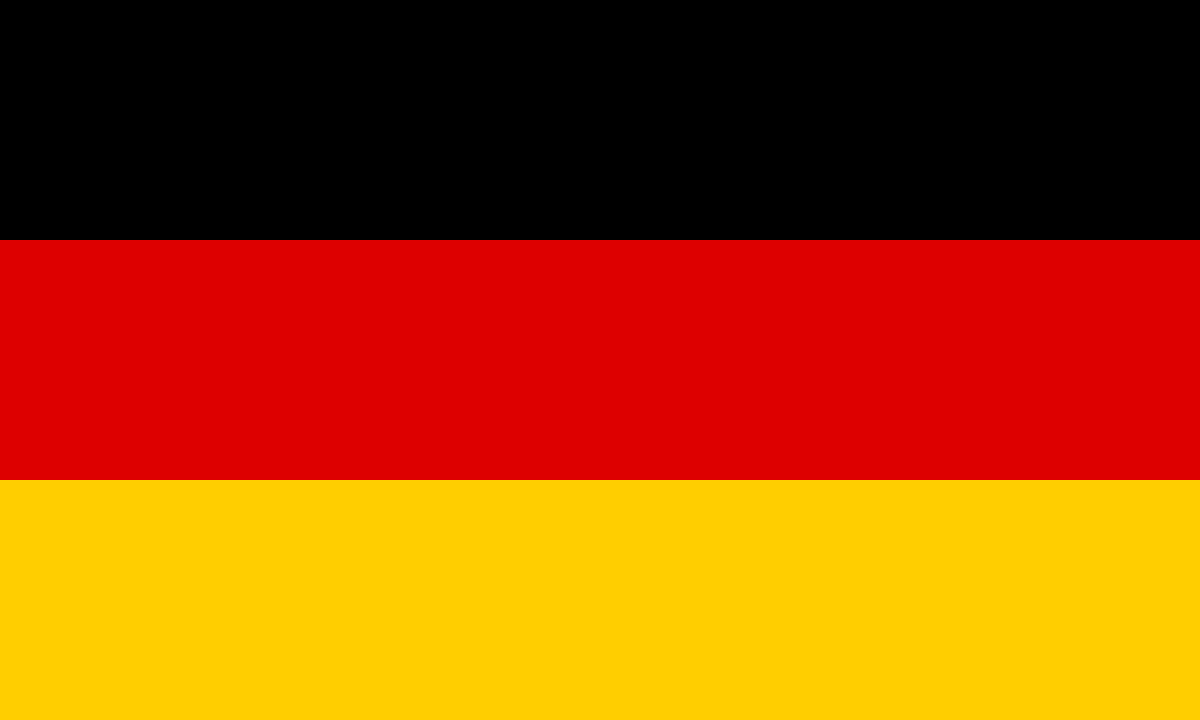Prototype: Scharnhorst was a German capital ship, alternatively described as a battleship or battlecruiser, of Nazi Germany's Kriegsmarine. She was the lead ship of her class, which included one other ship, Gneisenau. The ship was built at the Kriegsmarinewerft dockyard in Wilhelmshaven; she was laid down on 15 June 1935 and launched a year and four months later on 3 October 1936. Completed in January 1939, the ship was armed with a main battery of nine 28 cm (11 in) C/34 guns in three triple turrets. Plans to replace these weapons with six 38 cm (15 in) SK C/34 guns in twin turrets were never carried out.
Scharnhorst and Gneisenau operated together for much of the early portion of World War II, including sorties into the Atlantic to raid British merchant shipping. During her first operation, Scharnhorst sank the auxiliary cruiser HMS Rawalpindi in a short engagement (November 1939). Scharnhorst and Gneisenau participated in Operation Weserübung (April–June 1940), the German invasion of Norway. During operations off Norway, the two ships engaged the battlecruiser HMS Renown and sank the aircraft carrier HMS Glorious as well as her escort destroyers Acasta and Ardent. In that engagement Scharnhorst achieved one of the longest-range naval gunfire hits in history.
In early 1942, after repeated British bombing raids, the two ships made a daylight dash up the English Channel from occupied France to Germany. In early 1943, Scharnhorst joined the Bismarck-class battleship Tirpitz in Norway to interdict Allied convoys to the Soviet Union. Scharnhorst and several destroyers sortied from Norway to attack a convoy, but British naval patrols intercepted the German force. During the Battle of the North Cape (26 December 1943), the Royal Navy battleship HMS Duke of York and her escorts sank Scharnhorst. Only 36 men were rescued, out of a crew of 1,968.
Scharnhorst and Gneisenau operated together for much of the early portion of World War II, including sorties into the Atlantic to raid British merchant shipping. During her first operation, Scharnhorst sank the auxiliary cruiser HMS Rawalpindi in a short engagement (November 1939). Scharnhorst and Gneisenau participated in Operation Weserübung (April–June 1940), the German invasion of Norway. During operations off Norway, the two ships engaged the battlecruiser HMS Renown and sank the aircraft carrier HMS Glorious as well as her escort destroyers Acasta and Ardent. In that engagement Scharnhorst achieved one of the longest-range naval gunfire hits in history.
In early 1942, after repeated British bombing raids, the two ships made a daylight dash up the English Channel from occupied France to Germany. In early 1943, Scharnhorst joined the Bismarck-class battleship Tirpitz in Norway to interdict Allied convoys to the Soviet Union. Scharnhorst and several destroyers sortied from Norway to attack a convoy, but British naval patrols intercepted the German force. During the Battle of the North Cape (26 December 1943), the Royal Navy battleship HMS Duke of York and her escorts sank Scharnhorst. Only 36 men were rescued, out of a crew of 1,968.
Class History: The Scharnhorst class were the first capital ships, alternatively referred to as battlecruisers or battleships, built for Nazi Germany's Kriegsmarine after World War I. The class comprised two vessels: the lead ship Scharnhorst and Gneisenau. Scharnhorst was launched first and so she is considered to be the lead ship by some sources; however, they are also referred to as the Gneisenau class in some other sources as Gneisenau was the first to be laid down and commissioned They marked the beginning of German naval rearmament after the Treaty of Versailles. The ships were armed with nine 28 cm (11 in) SK C/34 guns in three triple turrets, though there were plans to replace these weapons with six 38 cm (15 in) SK C/34 guns in twin turrets.
The two ships were laid down in 1935, launched in late 1936, and commissioned into the German fleet by early 1939. Scharnhorst and Gneisenau operated together for much of the early portion of World War II, including sorties into the Atlantic to raid British merchant shipping. The two ships participated in Operation Weserübung, the German invasion of Norway. During operations off Norway, the two ships engaged the battlecruiser HMS Renown and sank the aircraft carrier HMS Glorious on 8 June 1940. In the engagement with Glorious, Scharnhorst achieved one of the longest-range naval gunfire hits in history. In early 1942, the two ships made a daylight dash up the English Channel from occupied France to Germany.
In late 1942, Gneisenau was heavily damaged in an Allied air raid against Kiel. In early 1943, Scharnhorst joined the Bismarck-class Tirpitz in Norway to interdict Allied convoys to the Soviet Union. Scharnhorst and several destroyers sortied from Norway to attack a convoy; the Germans were instead intercepted by British naval patrols. During the battle of North Cape, the Royal Navy battleship HMS Duke of York sank Scharnhorst. In the meantime, repair work on Gneisenau had begun, and the ship was in the process of being rearmed. However, when Scharnhorst was sunk, work on her sister was abandoned. Instead, she was sunk as a blockship in Gotenhafen in 1945; the wreck was broken up for scrap in the 1950s.
The two ships were laid down in 1935, launched in late 1936, and commissioned into the German fleet by early 1939. Scharnhorst and Gneisenau operated together for much of the early portion of World War II, including sorties into the Atlantic to raid British merchant shipping. The two ships participated in Operation Weserübung, the German invasion of Norway. During operations off Norway, the two ships engaged the battlecruiser HMS Renown and sank the aircraft carrier HMS Glorious on 8 June 1940. In the engagement with Glorious, Scharnhorst achieved one of the longest-range naval gunfire hits in history. In early 1942, the two ships made a daylight dash up the English Channel from occupied France to Germany.
In late 1942, Gneisenau was heavily damaged in an Allied air raid against Kiel. In early 1943, Scharnhorst joined the Bismarck-class Tirpitz in Norway to interdict Allied convoys to the Soviet Union. Scharnhorst and several destroyers sortied from Norway to attack a convoy; the Germans were instead intercepted by British naval patrols. During the battle of North Cape, the Royal Navy battleship HMS Duke of York sank Scharnhorst. In the meantime, repair work on Gneisenau had begun, and the ship was in the process of being rearmed. However, when Scharnhorst was sunk, work on her sister was abandoned. Instead, she was sunk as a blockship in Gotenhafen in 1945; the wreck was broken up for scrap in the 1950s.
Country: Germany is a Western European country with a landscape of forests, rivers, mountain ranges and North Sea beaches. It has over 2 millennia of history. Berlin, its capital, is home to art and nightlife scenes, the Brandenburg Gate and many sites relating to WWII. Munich is known for its Oktoberfest and beer halls, including the 16th-century Hofbräuhaus. Frankfurt, with its skyscrapers, houses the European Central Bank.
Item created by: George on 2016-11-03 09:19:54. Last edited by gdm on 2020-03-12 21:02:06
If you see errors or missing data in this entry, please feel free to log in and edit it. Anyone with a Gmail account can log in instantly.
If you see errors or missing data in this entry, please feel free to log in and edit it. Anyone with a Gmail account can log in instantly.


